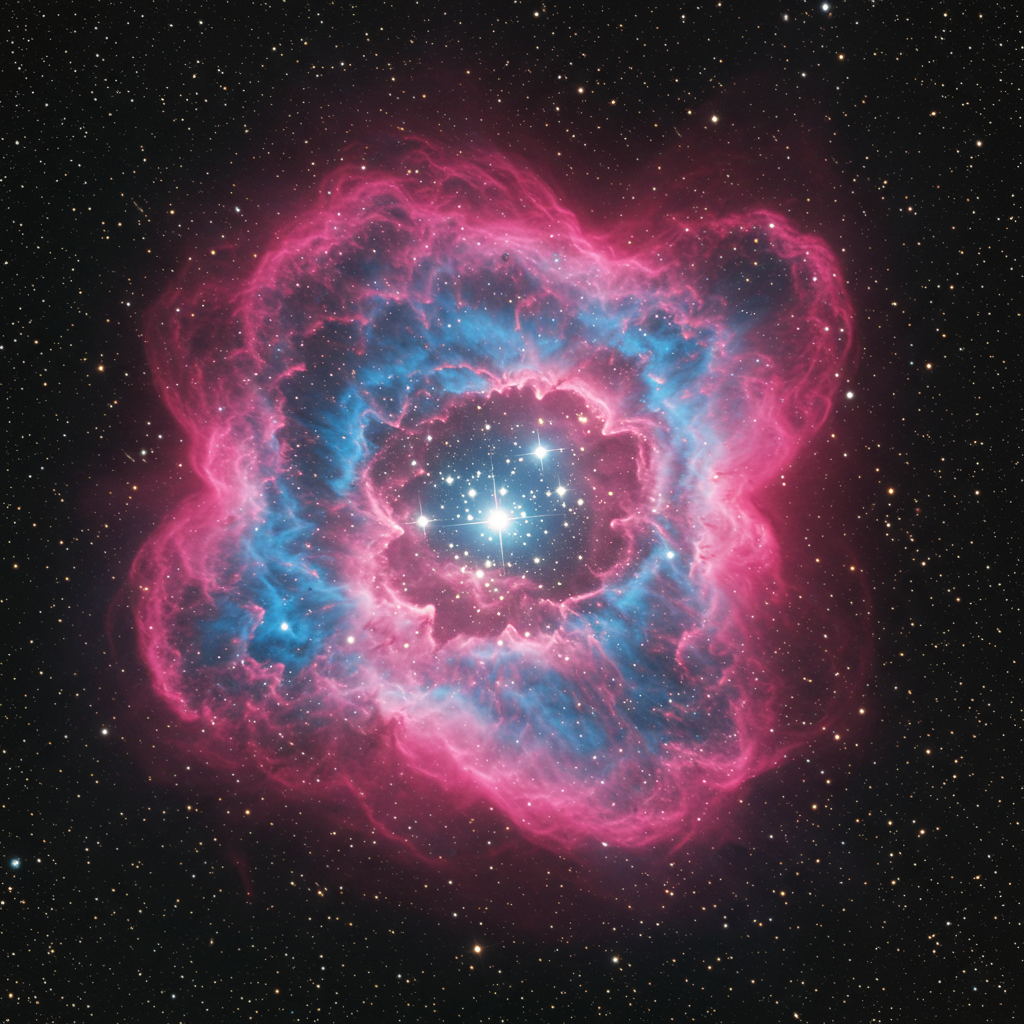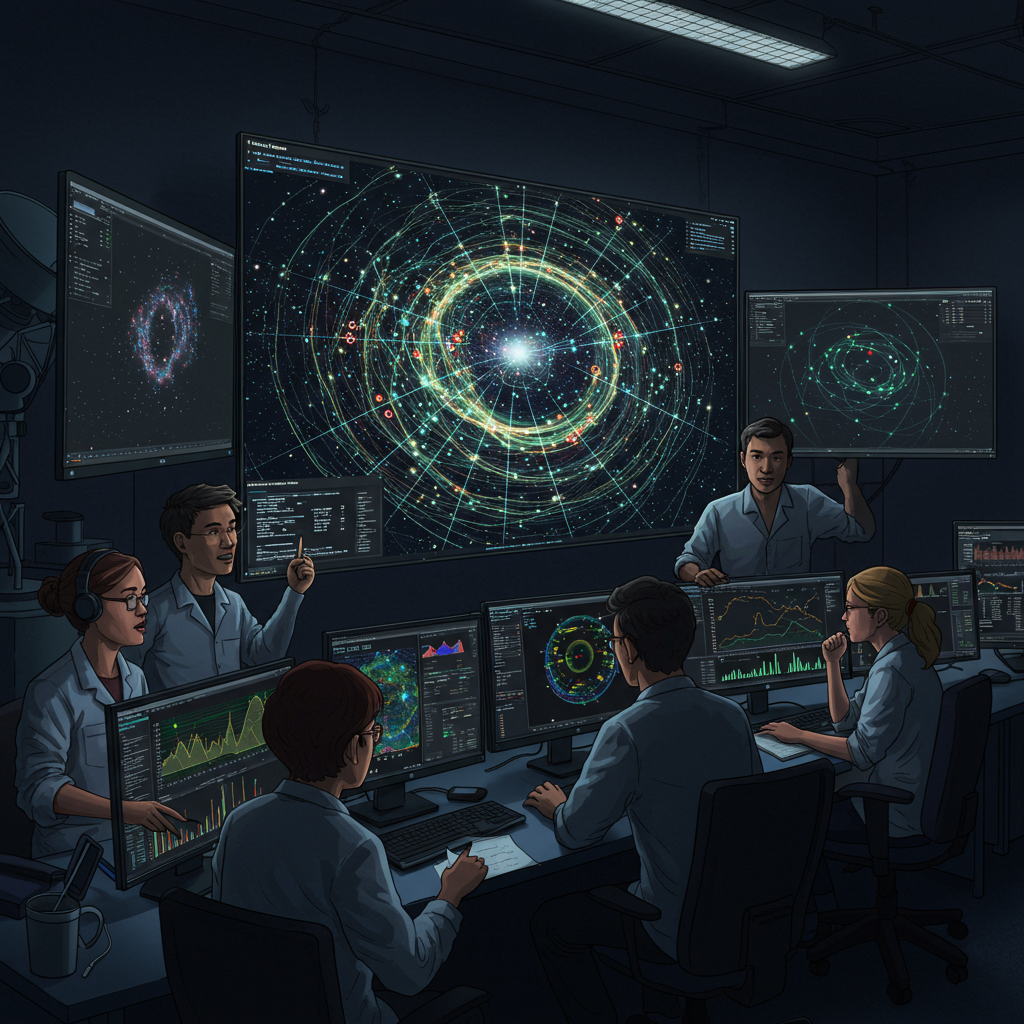A breathtaking close-up image of the Trifid nebula, affectionately nicknamed the “cotton candy” nebula, has been released. This stunning view comes from the Vera C. rubin observatory in Chile. It marks one of the first official looks provided by the observatory’s powerful telescope. The image showcases the nebula’s vibrant pink and blue swirls in unprecedented detail.
This release offers scientists and the public a truly unique perspective. Nebulae are vast interstellar clouds of gas and dust. They are often the birthplaces of new stars. Seeing one with this clarity reveals intricate structures and dynamic processes happening thousands of light-years away. The new images highlight the observatory’s incredible capability to peer deep into the cosmos.
A New Eye on the Cosmos
The Vera C. Rubin Observatory is a groundbreaking astronomical facility. It is nestled high in the Andes Mountains of Chile. This strategic location provides exceptional viewing conditions. The observatory is a joint project, primarily funded by the United States. Its core instrument is an 8.4-meter (27.6 feet) Simonyi Survey Telescope.
This telescope houses what is currently the world’s largest digital camera. Known as the Legacy Survey of Space and Time (LSST) Camera, it boasts an astonishing 3,200-megapixel resolution. This immense camera is capable of capturing extremely wide areas of the sky. Its precision allows it to image distant objects with incredible clarity.
Unveiling the “Cotton Candy” Nebula
Among the first images released by the Rubin Observatory is the spectacular view of the Trifid Nebula. It earned its “cotton candy” nickname due to its striking appearance. Bright pink and soft blue hues blend together across the cosmic cloud. The official name, Trifid Nebula (also cataloged as Messier 20), comes from its visual appearance. Dark lanes of dust appear to split the nebula into three distinct lobes.
This celestial wonder resides approximately 5,000 light-years away from Earth. It is located within the constellation Sagittarius, a rich region of our Milky Way galaxy. The new image provides a zoomed-in perspective unlike any seen before. It reveals intricate details of the nebula’s structure and composition.
The Colorful Secrets of Trifid
The captivating colors of the Trifid Nebula tell a story about its nature. The pink areas are classified as an emission nebula. Here, energetic radiation from hot, newly formed stars excites the surrounding hydrogen gas. This causes the gas to emit light at specific wavelengths, primarily in the red/pink part of the spectrum.
The blue regions, conversely, represent a reflection nebula. These are clouds of dust that scatter light emitted by nearby stars. The scattering process favors blue light wavelengths, much like Earth’s atmosphere scatters sunlight to make the sky appear blue. The dark lanes crisscrossing the nebula are dense clouds of interstellar dust. These clouds are so thick they block the light from objects behind them, creating dramatic silhouettes. Active star formation is indeed occurring within the Trifid Nebula. The intense radiation and stellar winds from these infant stars actively sculpt the gas and dust around them.
The composite image of the Trifid Nebula released by Rubin is the product of extensive work. It was created by combining hundreds of individual exposures. Over four nights in May 2025, the LSST Camera captured 664 exposures targeting this specific region. This process took over 7 hours of observation time. The resulting image provides a level of detail and scale previously unattainable.
Revolutionizing Astronomy: The LSST Survey
While the initial images are spectacular, they are just a prelude. The Rubin Observatory is embarking on an ambitious decade-long mission. It will conduct a comprehensive survey of the entire Southern Hemisphere night sky. This project is officially called the Legacy Survey of Space and Time (LSST).
The observatory will scan the visible sky every three to four nights. This rapid cadence will create an unprecedented cosmic time-lapse movie. By repeatedly imaging the same areas (up to 800 times over ten years), scientists can track changes in celestial objects over time. This includes movements, brightness variations, and sudden appearances or disappearances.
Mapping Dark Matter & Energy
A primary goal of the LSST survey is to shed light on some of the universe’s biggest mysteries. This includes understanding dark matter and dark energy. These invisible components make up roughly 95% of the universe’s total mass and energy. Despite their dominance, their nature remains largely unknown.
By observing the distribution and behavior of visible matter – galaxies, stars, and nebulae – across vast cosmic scales and over time, the Rubin Observatory will provide crucial data. This data will help astronomers test theories about dark energy’s effect on cosmic expansion and map the distribution of dark matter through its gravitational influence.
Guarding Our Planet: Asteroid Discovery
Beyond probing fundamental physics, the Rubin Observatory plays a vital role in planetary defense. Its wide field of view and rapid scanning capabilities are ideal for discovering near-Earth objects (NEOs). These are asteroids and comets whose orbits bring them close to Earth.
Scientists estimate the observatory could discover millions of new asteroids over its lifetime. In its very first week of operation, it already pinpointed over 2,000 previously unknown asteroids. Tracking these objects is crucial for assessing potential future impact risks. The LSST survey will vastly improve our catalog and understanding of small bodies in our solar system.
What Comes Next?
The release of the “cotton candy” nebula and other debut images signals the beginning of a new era. The Vera C. Rubin Observatory is expected to generate an enormous volume of data. In its first year alone, it will collect more information than all optical telescopes combined throughout history. This vast dataset will be made available to the global scientific community.
Project leaders emphasize the transformative potential of this facility. Brian Stone, chief of staff at the National Science Foundation, highlighted its capacity to unlock cosmic secrets. The decade-long survey will continue to reveal stunning views and invaluable data. Scientists anticipate discoveries ranging from new supernovas to distant galaxies and faint, ancient structures. The cosmic movie has just begun to unfold.
Frequently Asked Questions
What is the main mission of the Vera C. Rubin Observatory?
The Rubin Observatory’s primary mission is conducting the 10-year Legacy Survey of Space and Time (LSST). Using its powerful telescope and 3200 MP camera, it will repeatedly image the Southern Hemisphere sky. The goal is to create a cosmic time-lapse movie to study transient events, map the universe, search for dark energy and dark matter, and discover millions of asteroids and other celestial objects.
Where is the Vera C. Rubin Observatory located?
The Vera C. Rubin Observatory is situated in the Andes Mountains of northern Chile. Its high-altitude location provides exceptionally clear and stable atmospheric conditions, which are ideal for astronomical observations. The remote site minimizes light pollution and maximizes the amount of usable observing time throughout the year for its ambitious sky survey.
How will the Rubin Observatory help us understand dark energy and dark matter?
The Rubin Observatory’s extensive survey will collect unprecedented data on the distribution and evolution of galaxies and other cosmic structures over time. By precisely measuring the positions and properties of billions of celestial objects across vast distances, scientists can study subtle effects like gravitational lensing. This data allows researchers to test models of dark energy’s influence on cosmic expansion and map the invisible gravitational pull of dark matter, improving our understanding of these mysterious components of the universe.




